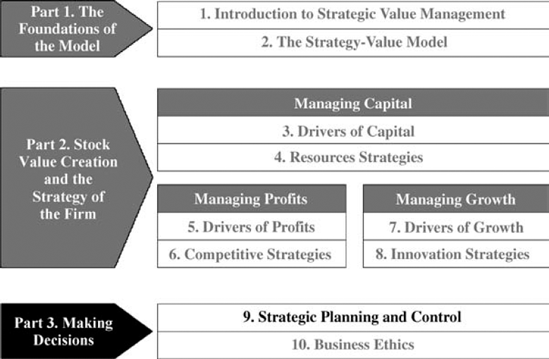Chapter 9. Strategic Planning and Control

The previous chapters show how the strategy-value model becomes the backbone of strategic management. They show how organizations develop their vision and mission, collect and classify environment information, analyze it, and propose strategies in order to create stock value. This process leads to a point where the organization has a set of possible strategies and must make decisions; this is the main focus of this chapter.
We first discuss strategic planning as a decision-making process. The chapter presents a dilemma: Must the strategy be developed at the top of the firm, or it is the consolidation of the strategies developed throughout the entire organization? The strategy-value model responds to such a dilemma, showing how the answer is contingent to the position of the firm in the strategy-value model.
The second discussion in this chapter is the analytical tool used to guide the decision making and its communication: the strategic plan. Here the strategy-value model solves another problem of strategic management: the proliferation of countless alternative models of strategic planning.
As you have seen in previous chapters, this book introduces economic modeling into strategic management. The agency theory, an economic theory, will help to understand the interaction between the two main groups that participate in the decision making: the ...
Get Strategic Value Management: Stock Value Creation and the Management of the Firm now with the O’Reilly learning platform.
O’Reilly members experience books, live events, courses curated by job role, and more from O’Reilly and nearly 200 top publishers.

